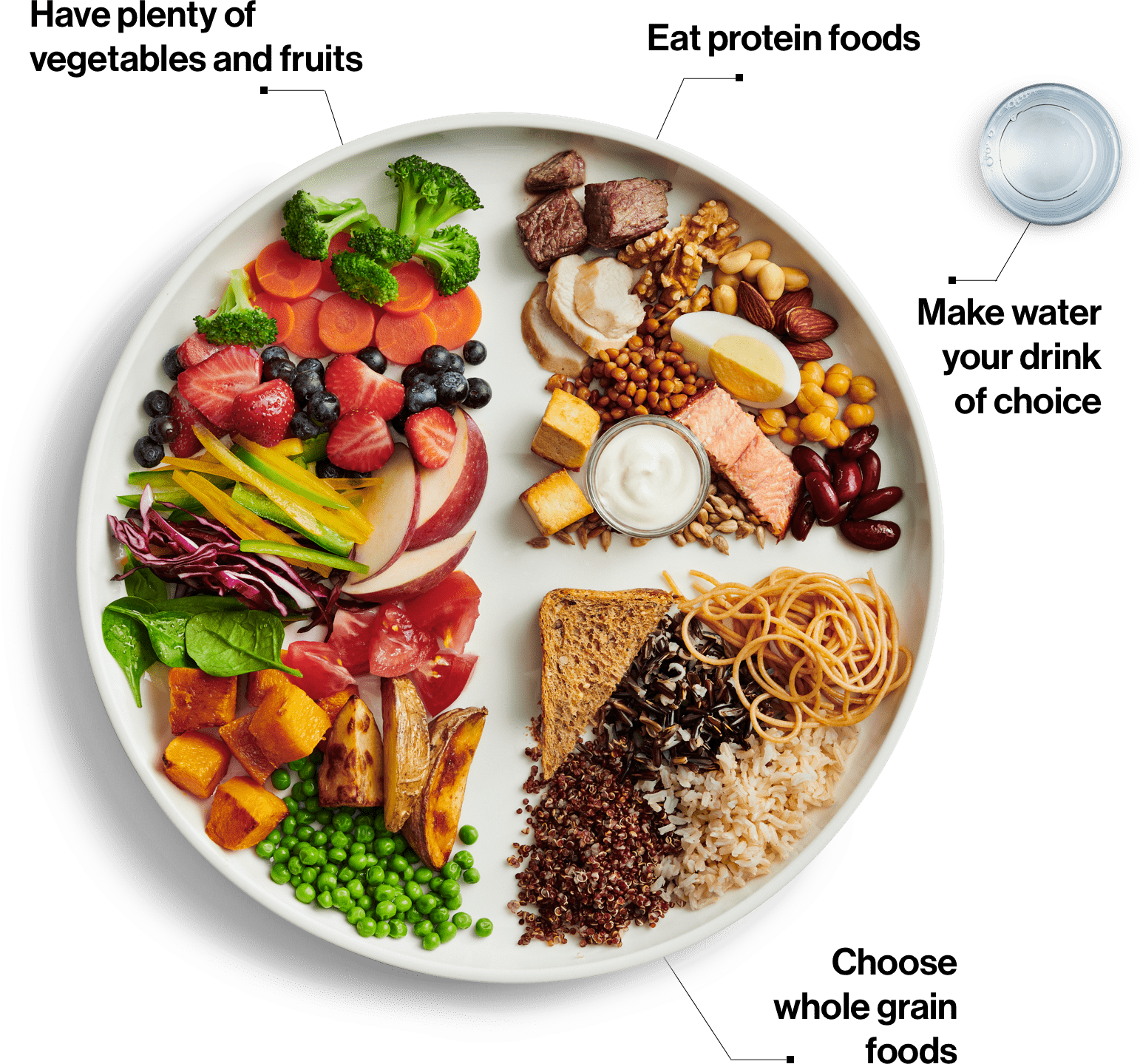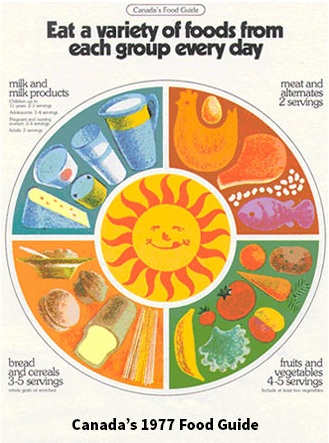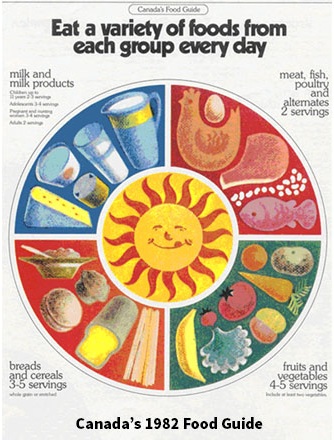Canada’s New Food Guide - 2019
/Canada’s Latest Food Guide as of 2019
Canada recently released a new food guide in January of 2019. [1] The new food guide advises Canadians to eliminate dairy, eat less meat and move towards a plant-based diet. We will now look at the history of the Food Guide and the clear pattern that emerges. Every iteration it keeps moving toward a recommendation of a whole food plant based diet for Canadians. Truly, the government of Canada is giving inspiration to other countries to move in the same direction.
The guide is created by the Canadian federal government and updated every few years. The old guides used to include large quantities of animal products. In fact, Canada’s 1977 Food Guide showed a quarter of the plate filled with milk and milk products and another quarter filled with meat and alternates. So essentially half of the plate showed animal products.
Another update to the food guide was made in 1982, but there were no major changes. The colors were changed, and the group “meat and alternatives” was changed to “meat, fish, poultry, and alternatives.” There was hardly any progress in the Guide in the five years 1977-1982.
A revolutionary book titled Diet for a New America: How Your Food Choices Affect Your Health, Happiness and the Future of Life on Earth was published by John Robbins, the son of the co-founder of Baskin-Robbins, in 1987. This book inspired a whole lot of people to go plant-based during that time period.
Canada’s 1992 Food Guide
According to Canada’s Food History page which describes the 1992 edition, “The revised Canada's Food Guide... marks a new era in nutrition guidance in Canada. Historic changes accompanied the 1992 revision. The title was changed to reflect the overarching goal of the Guide, becoming Canada's Food Guide to Healthy Eating. The design changed - a rainbow graphic now displayed the four food groups, all of which bore new names: - Grain Products, Vegetables and Fruit, Milk Products, and Meat and Alternatives.”
The 1992 Food Guide also marked the beginning of a shift towards a more plant-based food guide. The recommended number of servings for Grain Products was 5-12, which was an increase from previous years. Canadians were also encouraged to consume 5-10 servings of Fruits and Vegetables a day. The servings of Meat and Alternatives were held to 2-3 servings and Milk Products to 2-4 servings per day. Thus, we see a clear shift toward a WFPB diet as early as 26 years ago!
Canada’s 2007 Food Guide
Canada’s 2007 Food Guide also had a strong focus on Vegetables and Fruit as well as Grain Products. The Food Guide also came with some tips to “Meet your needs for vitamins, minerals, and other nutrients. Reduce your risk of obesity, type 2 diabetes, heart disease, certain types of cancer and osteoporosis. Contribute to your overall health and vitality.”
Some tips included “Have meat alternatives such as beans, lentils, and tofu often.” and “Eat at least one dark green and one orange vegetable each day.” The tips from 2007 along with the Food Guide still included dairy and animal products but were moving closer to whole food plant-based (WFPB).
Tips from Canada’s 2019 Food Guidelines
Now, Canada has released a new food guide, the latest 2019 version, which has no dairy and very little animal products. Half of the new plate is filled with fruits and vegetables and a quarter of the plate is filled with whole grain foods. The remaining quarter of the plate is proteins, which include beans, legumes, seeds, and tofu. In fact, the guidelines say, “Vegetables, fruit, whole grains, and protein foods should be consumed regularly. Among protein foods, consume plant-based more often."
Note that only a quarter of the entire plate contains small amounts of animal products. Even for this small quantity, the Guide is suggesting we avoid animal foods altogether, but cannot say it yet that strongly. Though as we saw earlier, Canada’s food guide is shifting towards a more whole food plant-based diet over the years. Perhaps this hesitation is explained by a quote from the Health Minister Ginette Petitpas Taylor about lobbying from the meat and dairy industries. "The only thing I can say is that these many groups have made their positions known, and it is their right to do so. It was my role as Health Minister to meet with all stakeholders.” [2] I suspect that these industries lobbied to include some animal products in the food guide. However, there is no doubt that the guide is moving towards WFPB.
For us teens, the website also includes a section with tips. “Try including vegetables and fruits at every meal and snack. They are filled with nutrients that your body needs. They also make a great snack when you are on the go. When deciding what to drink, make water your drink of choice.” The tips also explain how to eat your food to keep yourself from overeating. “Focus all of your attention on eating. Turn off the TV and put away your phone, lap-top or other screens. When you are distracted while you eat, you can lose track of how much you have eaten.”
The page also warns teens to beware of food marketing because “Most foods that are advertised are highly processed foods.” The guidelines also state that there is an “Association between increased intakes of vegetables and fruit and decreased cardiovascular disease risk.” Dr. Esselstyn would be happy!
It is heartwarming to know that a main-stream source like the Canadian Food Guide of 2019 is now very close to advocating a WFPB diet. I am so glad that they are providing such good advice to all teens and leading the way for the entire population to go plant-based. This was the news of the week for me! Cheers to the Canadians. I hope other counties will follow their lead, especially the US of A!
Sources:
[1] https://food-guide.canada.ca/en/
[2] https://www.plantbasednews.org/post/new-canada-food-guide-ditches-dairy-says-eat-more-vegan-foods






